Buy or gift a stand-alone digital subscription and get unlimited access to dozens of back issues for just £18.99 / $18.99 a year.
Please register at www.exacteditions.com/digital/cornucopia with your subscriber account number or contact subscriptions@cornucopia.net
Buy a digital subscription Go to the Digital Edition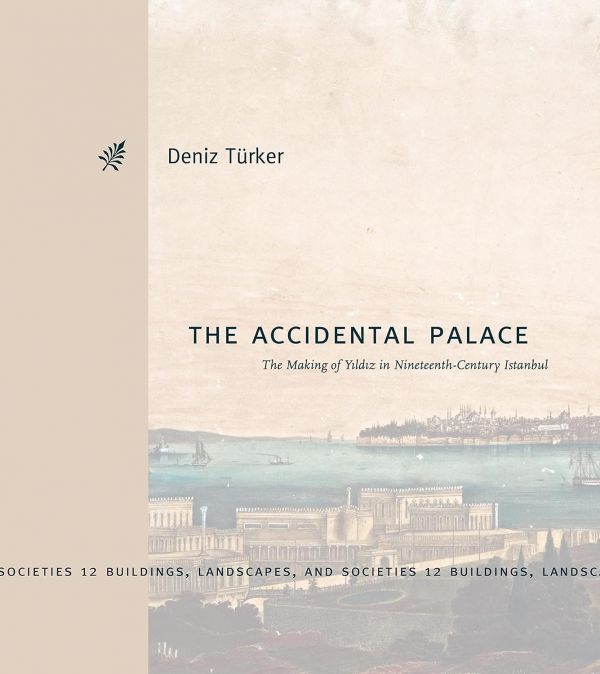
The Making of Yıldız in Nineteenth-Century Istanbul (Buildings, Landscapes, and Societies)
This book tells the story of Yıldız Palace in Istanbul, the last and largest imperial residential complex of the Ottoman Empire. Today, the palace is physically fragmented and has been all but erased from Istanbul’s urban memory. At its peak, however, Yıldız was a global city in miniature and the centre of the empire’s vast bureaucratic apparatus.
Following a chronological arc from 1795 to 1909, The Accidental Palace shows how the site developed from a rural estate of the queen mothers into the heart of Ottoman government. Nominally, the palace may have belonged to the rarefied realm of the Ottoman elite, but as Deniz Türker reveals, the development of the site was profoundly connected to Istanbul’s urban history and to changing conceptions of empire, absolutism, diplomacy, reform, and the public. Türker explores these connections, framing Yıldız Palace and its grounds not only as a hermetic expression of imperial identity but also as a product of an increasingly globalised consumer culture, defined by access to a vast number of goods and services across geographical boundaries.
Drawn from archival research conducted in Yıldız’s imperial library, The Accidental Palace provides important insights into a decisive moment in the palace’s architectural and landscape history and demonstrates how Yıldız was inextricably tied to ideas of sovereignty, visibility, taste, and self-fashioning. It will appeal to specialists in the art, architecture, politics, and culture of nineteenth-century Turkey and the Ottoman Empire.
‘The Accidental Palace offers an erudite analysis of the nexus of artistic activity represented by Yıldız Palace. It is one of the first English-language works of art or architectural history of the late Ottoman world that does not frame its importance through the prism of orientalism. Deniz Türker engages in a stealthy refutation of Eurocentric frameworks for late Ottoman visual synthesis by doing the archival work that allows the myriad actors involved—patrons, gardeners, builders, diplomats, and more—to materialize their own artistic autonomy, resulting in a truly fresh look at artistic agency.’
Peter H. Christensen, author of Precious Metal: German Steel, Modernity, and Ecology
Palaces were crucibles of power: Versailles, Whitehall, the Topkapı were centres of life-transforming decisions for millions of subjects, as well as residences for rulers. Many books have been written on the Topkapı, the main palace of the Ottoman sultans before 1830. As far as I know, The Accidental Palace is the first book outside Turkey on Yıldız Palace. Situated on hills on the European side of the Bosphorus, Yıldız was the residence of Abdülhamid II from 1877 to 1909. Having suspended the Ottoman constitution, he was absolute ruler of the Empire. His power and personality electrified contemporaries. In his reign, Yıldız attracted visitors as varied as Sarah Bernhardt and the great Muslim reformer Jamal al-din al-Afghani.
In a highly innovative manner, although not free from jargon and phrases such as “savvy urbanites”, Deniz Türker, professor of art history at Rutgers University, approaches Yıldız through its buildings, decoration and gardens, rather than its political history. She uses sources in Turkish, French, English and German, aided by 98 pictures. Every page contains revelations about the palace and the reign. Four maps show who lived where in Yıldız, from the Sultan’s foster mother to the eunuchs and ADCs in waiting, as well as the location of the palace’s many gates, stables, offices and kitchens. Different chapters deal with the gardens, the architecture, the patronage of sultans’ mothers and a souvenir photograph album of Yıldız in 1905, probably a present from the Sultan to an Egyptian princess.
Türker shows that landscape and palaces affect politics, and vice versa: before 1800 the Ottoman court was first attracted to the hills above the Bosphorus, on which Yıldız would be built, by their clean air. In Turkish Yıldız means north wind as well as star (the ceilings of the palace mosque and theatre are covered with stars), and fresh air was more appealing than the miasma of Istanbul. Fears for his security, as well as his health, first drove Abdülhamid to move to Yıldız. The Sultan was under threat from supporters of his unbalanced, liberal brother Murad V. Deposed in 1876, Murad was imprisoned in the palace of Çırağan on the Bosphorus, with his wives and children, until his death in 1904.
In 1907 the Sultan’s visitor Muzaffar al-din Shah of Iran, whose travel account Türker frequently quotes, called Yıldız a town as well as a fortress. Yıldız was an accumulation of buildings, not a single power statement like Dolmabahçe Palace, built by Abdülhamid’s father, where he lived in 1876–77. Around 30 separate kiosks, chalets, cottages and offices, built at different times, reflected the changing needs of the Sultan – hence the book’s title, The Accidental Palace.
Behind Yıldız’s high walls were guest houses for Arab and Kurdish notables, whom the Sultan had invited to Istanbul; a theatre from 1889, one of the last to be built in a palace; the Sultan’s museum of Ottoman treasures and gifts; a library; schools and residences for the Sutlan’s children; carpentry, photography and bookbinding workshops, and factories for making rifles and porcelain. Yıldız also had greenhouses and orchards; a zoo and pigeon house. A small railway helped guests move around the complex.
Yıldız became the Sultan’s world. People came to him; he rarely left the palace. Servants bearing trays of food constantly circulated between the kitchens and the main office building, the Büyük Mabeyn, or Great Between. Officials were on call day and night, as the Sultan might decide to work at any time.
After the role of landscape in defining power, Ottoman flexibility is the main message of this magnificent book, a phenomenon already described, for the 18th century, by Rüstem Ünver, in Ottoman Baroque (2019). Deniz Türker compares Yıldız to a “permanent world exhibition”. Over the years more kiosks were added, usually in wood for fear of earthquakes, and sometimes prefabricated, in a range of Chinese, Japanese, Persian, Swiss, Swedish and Ottoman styles.
Like the population of Istanbul itself, the personnel of the palace was as cosmopolitan as the architecture. The grand viziers and most of the servants were Turkish. The architect of the Hamidiye mosque, built by the main palace entrance in 1886, however, was Greek – Nikolaos Tzelepis, working under the Sultan’s principal architect, Yanko Ioannidis Effendi. One chief gardener, and the private doctor, with whom the Sultan often dined, were French. His opera troupe was run by Arturo Stravolo, from Naples. His court painter was Fausto Zonaro, from Venice. Zonaro called Yıldız paradise on earth – in his studio in the Çadır (Tent) Kiosk, he painted glorifications of Ottoman history and portraits of the Sultan’s children. In 13 years working at Yıldız, despite going there every week, Zonaro met the Sultan only three times (see Cornucopia 52).
Many of the gardeners and guards were Albanians; there were also Arab guards, not mentioned here. The Sultan’s bookbinder was Polish, his photographers were Greek (Vasilaki Kargopoulo) and Armenian (Abdullah Frères). His second secretary, Izzet Holo Pasha, the brains behind the Hejaz railway, also superintendent of the gardens, came from Damascus. The conductor of his orchestra, Aranda Pasha, was Spanish. Sheikh Zafir – whose wonderful 1903 mausoleum and mosque by another of the Sultan’s architects, Raimondo d’Aronco, are below the palace – came from Tripolitania.
At the heart of the palace, in a modest modern building, lived the Sultan. He worked hard, generally lunched with his family, and relaxed in the evening, when not entertaining guests, by pruning roses, making furniture, or being read to (he particularly enjoyed the stories of Sherlock Holmes).
Abdülhamid was Caliph of the Muslims. His visits every Friday to the Hamidye mosque, just outside the palace, were the last great weekly public religious ritual of a court. Thousands of guards and visitors assembled to watch. At the same time, through a stream of royal visits, exchanges of orders of chivalry, and the adoption of Western fashions, music and cuisine, Yıldız continued the Ottoman court’s long march towards Westernisation – already signalled by the Sultan’s move from the Topkapı to the Dolmabahçe, and by the reception of the Empress Eugénie in 1869 (Cornucopia 61). Divans were replaced by chairs and sofas. Ottoman princesses composed waltzes and mazurkas. There were plans by the minister Selim Melhame, another Arab serving Abdülhamid in Yıldız, to change the order of succession from the senior male of the dynasty to the Sultan’s eldest son, after the Western pattern.
Like many other expanding palaces, such as Buckingham Palace and the Hofburg, Yıldız shows the dynamism of monarchy in the 19th century. Sultans and kings could have more impact than their predecessors. The “age of revolutions” and industrialisation was also a century of courts and dynasties. Abdülhamid’s decisions on Zionism, Lebanon and the Hejaz still affect politics today. The clock towers built to celebrate his reign still keep time from Salonica to Jaffa.
As the palace expanded, however, the Empire contracted. Cyprus and Crete were lost. In 1905 Armenians tried to assassinate the Sultan on his way to the mosque. After the Young Turk revolution on July 24, 1908, finally falling in line with other monarchies, Abdülhamid readopted the modern constitution of 1876. He had never been cheered so loudly as on July 26, 1908, the first time he attended the Hamidiye mosque after issuing an amnesty to prisoners and promising to hold elections. On December 31 the Sultan gave a banquet in Yıldız for deputies to the second Ottoman parliament.
After a failed counter-coup in April 1909, courtiers, servants and many of his own sons left Yıldız with their possessions, abandoning the Sultan. He was deposed and on April 29, 1909, sent into exile in Salonica. Nadir Agha, the Sultan’s favourite eunuch, won the protection of the new revolutionary government by revealing the locations of the Sultan’s jewellery-filled safes. Treasures from Yıldız began to be sold on the art market.
The Yıldız mosque, with its exuberant Ottoman/Moorish/Neogothic interior, is still functioning, although when I visited it in September 2023, I was the only person there. The Chalet Kiosk (Şale Köşkü), built for the Kaiser’s visits in 1889 and 1898, is closed for restoration: an exceptional palace interior from the 1900s, still filled with furniture and carpets from imperial workshops (see Cornucopia 22). Some trees in the park were probably planted under Abdülhamid.
However, the public is now barred from entering the main palace complex, which once contained the Yıldız Palace Museum and Ircica, an Islamic research centre. Yıldız is one of the growing number of palaces used by the current president of Turkey. In Istanbul, as in Moscow, power still
likes to reside in palaces.
Philip Mansel’s books include ‘Constantinople: City of the World’s Desire’ (1995); ‘Levant: Splendour and Catastrophe on the Mediterranean’ (2010); and ‘King of the World: the Life of Louis XIV’ (2019). He is currently working on a history of 19th-century courts and dynasties
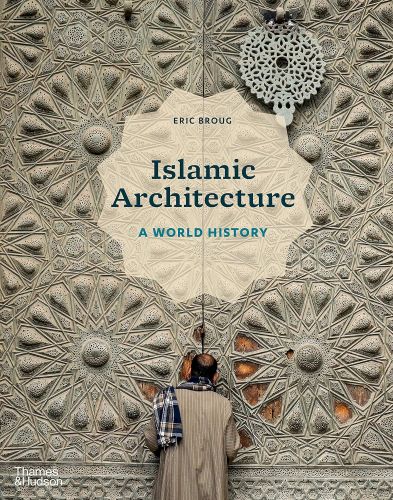

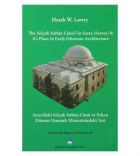
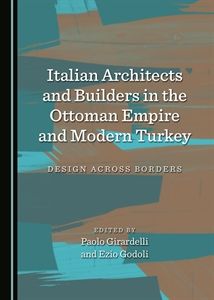

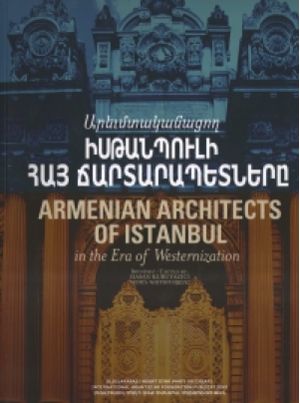
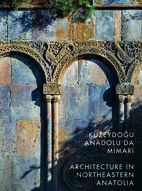
1. STANDARD
Standard, untracked shipping is available worldwide. However, for high-value or heavy shipments outside the UK and Turkey, we strongly recommend option 2 or 3.
2. TRACKED SHIPPING
You can choose this option when ordering online.
3. EXPRESS SHIPPING
Contact subscriptions@cornucopia.net for a quote.
You can also order directly through subscriptions@cornucopia.net if you are worried about shipping times. We can issue a secure online invoice payable by debit or credit card for your order.

Cornucopia works in partnership with the digital publishing platform Exact Editions to offer individual and institutional subscribers unlimited access to a searchable archive of fascinating back issues and every newly published issue. The digital edition of Cornucopia is available cross-platform on web, iOS and Android and offers a comprehensive search function, allowing the title’s cultural content to be delved into at the touch of a button.
Digital Subscription: £18.99 / $18.99 (1 year)
Subscribe now